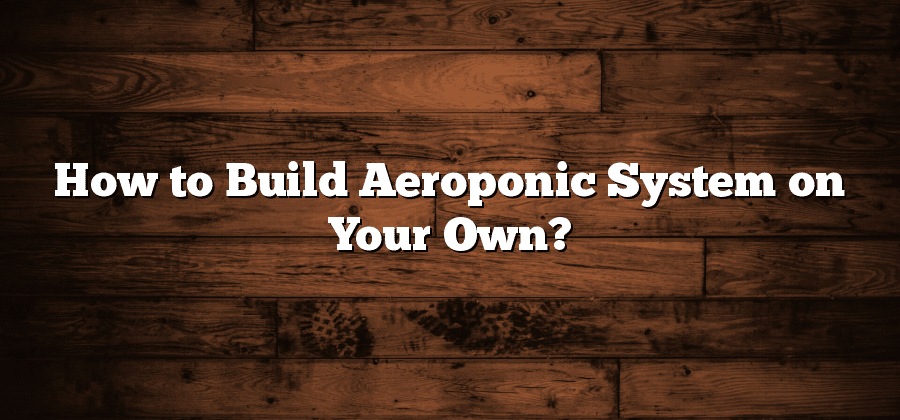Understanding the Basics of Aeroponic Systems
Aeroponic systems represent an innovative method of cultivation that is gaining popularity among horticulturists and enthusiasts alike. Unlike traditional gardening methods that rely on soil, aeroponic systems utilize air and water as the primary mediums for plant growth. The fundamental principle behind aeroponics is to suspend plant roots in a mist or fog of nutrient-rich water, allowing for efficient nutrient uptake and optimal oxygen exposure. This method not only promotes faster growth rates but also conserves water usage, making it an environmentally friendly choice for gardening.
In aeroponic systems, plants are typically placed in containers or net pots, allowing their roots to hang freely in the air. The roots are periodically misted or sprayed with a nutrient-rich solution, ensuring the plants receive a constant supply of essential minerals and elements. This misting process is achieved using specialized equipment such as misting nozzles or foggers, which atomize the water into tiny droplets. As the mist settles on the roots, the plant absorbs the nutrients and moisture it needs to thrive. Additionally, aeroponic systems often incorporate mechanisms to supply oxygen directly to the roots, further enhancing plant growth and overall health.
Selecting the Right Materials and Equipment
When it comes to selecting the right materials and equipment for your aeroponic system, it is important to prioritize quality and durability. Investing in components that are built to withstand the rigors of a hydroponic environment will ensure the longevity of your system. Look for materials that are resistant to corrosion and can withstand exposure to moisture and nutrient solutions. Stainless steel, PVC, and food-grade plastics are commonly used in aeroponic systems due to their durability and resistance to degradation.
When choosing equipment for your aeroponic system, consider the specific needs of your plants and the scale of your operation. Aeroponic systems typically require a few key components, including pumps, misters, timers, and reservoirs. It is important to select high-quality equipment that is reliable and efficient in delivering the optimal amount of nutrient solution to your plants. Research different manufacturers and read customer reviews to ensure that the equipment you select is reputable and will meet the needs of your specific aeroponic system.
Designing and Planning Your Aeroponic System
Once you have a clear understanding of the basics of aeroponic systems and have selected the appropriate materials and equipment, it is time to move on to the crucial step of designing and planning your aeroponic system. This step is essential in ensuring the success of your project and maximizing the growth and yield of your plants.
During the designing and planning phase, you need to consider various factors such as the available space, desired capacity, and specific requirements of your plants. Careful consideration of these factors will help you determine the appropriate size and configuration of your aeroponic system. Additionally, you need to think about the layout and arrangement of components within the system, such as the placement of the reservoir, pump, and spray nozzles. Proper planning will optimize the efficiency and effectiveness of your aeroponic system, leading to healthier plants and higher yields.
Building the Structure for Your Aero Garden
When it comes to building the structure for your Aero Garden, it is important to consider a few key factors. Firstly, you need to decide on the size and shape of your garden. This will depend on the space you have available, as well as the number of plants you plan to grow. It is recommended to start small if you are new to aeroponics, and gradually expand as you gain more experience.
Once you have determined the size and shape of your garden, you will need to choose the appropriate materials for construction. The most common material used for Aero Garden structures is PVC piping. PVC is durable, lightweight, and easy to work with. You will also need connectors and joints to assemble the structure. These can be found at your local hardware store or online. It is important to ensure that all materials are food-safe and resistant to corrosion. Additionally, make sure to measure and cut the PVC pipes accurately to ensure a sturdy and stable structure for your Aero Garden.
Setting Up the Water Supply and Nutrient Delivery System
Once you have built the structure for your aeroponic system, the next step is to set up the water supply and nutrient delivery system. This crucial aspect ensures that your plants receive the necessary water and nutrients for healthy growth.
The first thing you need to consider is the water source. It is important to choose a clean and reliable water supply. Tap water is commonly used, but if it contains high levels of chlorine or other harmful chemicals, it may be necessary to use filtered or purified water. Additionally, you need to check the pH levels of the water to ensure it is suitable for plant growth. Adjusting the pH may be necessary to create the optimal conditions for your plants.
Next, you need to install a system for delivering the water and nutrients to your plants. This can be done through various methods such as spray nozzles, misters, or drip lines. The system should be designed to evenly distribute the water and nutrients throughout the root zone of the plants. Additionally, a reservoir or tank should be set up to hold the water and nutrient solution. This reservoir should be easily accessible for regular maintenance and refilling. Overall, setting up a reliable water supply and nutrient delivery system is vital to ensure the success of your aeroponic system and promote healthy plant growth.






